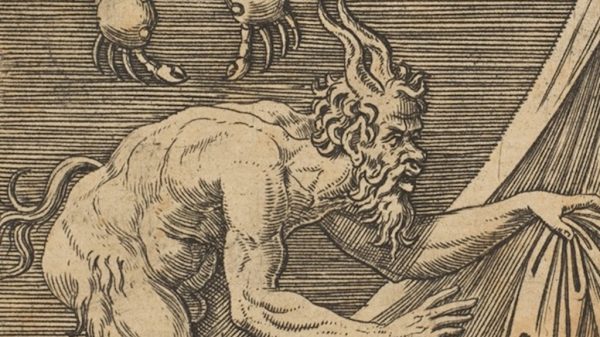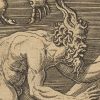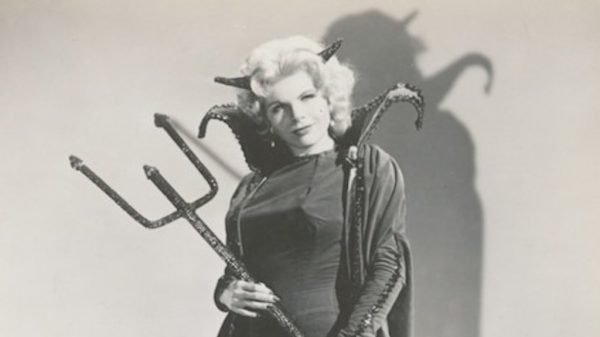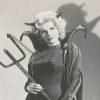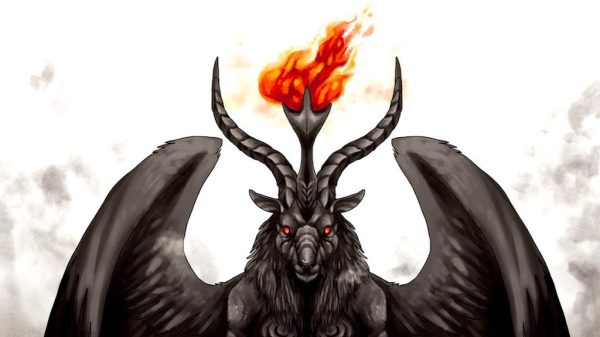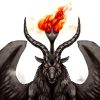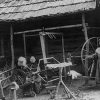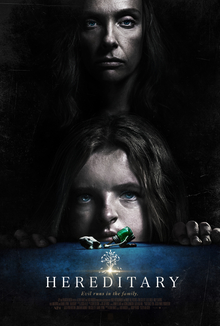
The film Hereditary, which was recently released on video, is scary as shit. I don’t need to quote a well-established critic to back me up here, I’m a horror connoisseur and I spent the last the last ten minutes of the film with my mouth literally agape. When the reveal hits, it’s also batshit insane and inspired filmmaking, the kind that jars you out of the realism of the slow-burning family drama that first-time director Ari Aster has been cultivating for the first two-thirds of his film and takes you on a roller coaster ride to hell. Without giving too much away, the horror at the center of the film revolves around the conjuration of an ancient demonic force.
Conjuration, or calling forth an entity, can take the form of invocations or evocations. Invocations are when an individual calls an entity into themselves, whereas an evocation is when an individual, or group, calls an entity forth to independently appear in the real world. The conjuration in Hereditary is a little bit from column A and a little bit from column B. The following is a list of historical examples of evocations where practitioners have called forth (or at least tried to) the kind of force that haunts Hereditary, for both good and ill.
King Solomon
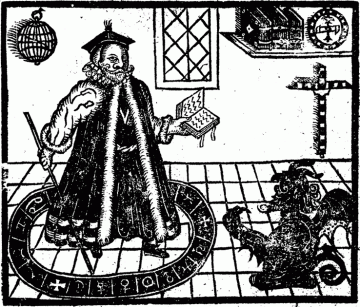
King of Israel, prophet and first demonologist? The mythos surrounding King Solomon is legion (pun intended), not only is he credited as one of the great patriarchs of the Abrahamic religions, but his name adorns two of the most infamous grimoires of all time, The Greater and Lesser Key of Solomon. Although both were likely written in the middle ages, the inspiration for their names comes from a First Century pseudepigrapha entitled The Testament of Solomon that describes the great king’s workings with demons. According to the legend, the archangel Michael appeared to Solomon and gave him a ring bearing the seal of Yahweh on it (believed to be what is now known as the Star of David), which allowed him to control and command demons. Solomon eventually came to command Beelzebub himself after charging a lesser demon with the task of stamping the seal of Yahweh on the great prince of Hell. With Beelzebub in tow, Solomon had access to 36 other demons to do his bidding. Solomon put the demons to work in constructing the First Temple in Jerusalem, which was said to house the Arc of the Covenant and Yahweh himself. Solomon also acquired knowledge from the demons regarding the disease and disaster they wrought upon the land with the aim of controlling these malignancies. It is little surprise then that Solomon’s name is attached to the Ars Goetia, one of the five books that comprise The Lesser Key of Solomon, and which lays out the hierarchy of Hell, as well as the names and description of the 72 demons that comprise it. The legacy of King Solomon, fact or fiction, as we shall see, is one of the most important cornerstones of Western occultism and demonology.
Pope Honorius III & Clerical Black Magic in the Middle Ages

In 1326 a Papal Bull was issued condemning the “pestilential plague” of men who claimed to be Christian, while privately making pacts with demons. The statement was made in response to an explosion in magical practices that resulted from the advent of Latin translations of greco-roman, Islamic, and Kabbalistic magical treatises, which were being perused and practiced by the Church clergy themselves. Since few lay persons were literate or had access to such works, unlike the later witch hunts of Europe, in this case, the call was very much coming from inside the house. Magical tracts such as the Picatrix, Munich Manual of Demonic Magic, and the Solomonic-inspired texts The Key of Solomon, The Sworn Book of Honorius, and The Grimoire of Pope Honorius, which is attributed to Pope Honorius III, who spearheaded the Fifth Crusade during his papacy that stretched from 1216 to 1227. The Solomonic texts are a continuation and deepening of the lore found in The Testament of Solomon, fueled by the belief that if one were truly pious then one could evoke and control demons in order to serve God’s will. Instructions on how to draw magical circles, pentagrams, how to make proper animal sacrifices, the use of magical tools, the astrologically correct date and time for evocations, and the names of power that inform most occult practices find their basis in these texts. The “holy” men who utilized them did so for a variety of purposes, from gaining esoteric knowledge to fulfilling some material gain, or for more nefarious ends, such as cursing. Eventually, many of these clerical practitioners ran afoul of the Inquisition, but strains of these practices remain in the Catholic Rite of Exorcism, which still seeks to evoke demonic forces in order to expel them.
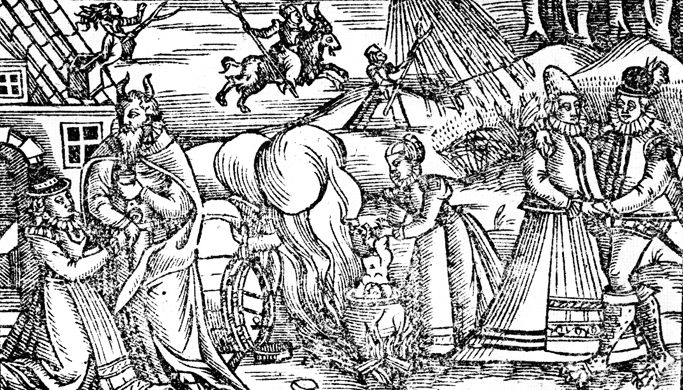
Isobel Gowdie & The Witches’ Sabbat
Unlike the complex ceremonial magical practices that Church officials were contending with inside their own halls, lay persons who sought magical assistance did so through the ways of folk magic, or what is commonly known as witchcraft. Although historians have long sought to neuter the Witches’ Sabbat as little more than a figment of the imagination of sadistic Christian magistrates throughout medieval Europe, evidence of pre-Christian folk practices mixed with diabolism continues to pester academics who are constantly revisiting the evidence of that dark time. One such scholar is Carlo Ginzburg who generally describes the Sabbat as a congregation of male and female witches who renounce the Christian faith, desecrate the sacrament and make offerings to the Devil before engaging in shape-shifting, dancing and orgies. While Ginzburg doesn’t think this was literally true, he does believe the basic narrative of the Sabbat was indicative of a shamanistic cult existent in Europe at the time. One of the most unique narratives of the Sabbat comes from Isobel Gowdie, a Scottish witch who gave four confessions that, unlike so many others, were not coerced by the use of torture. Gowdie claimed that she was a member of a coven and that the Devil would join them in their rites. He was described as a dark, hairy man who sometimes wore boots, and sometimes cloven hooves. She related that the Fairy Queen was also present, which would indicate a hybrid practice of paganism mixed with the more recent influence of Christianity/Satanism. During the rites, the witches allegedly exhumed the corpse of a child, blighted crops and turned into animals, with Gowdie becoming a hare. Gowdie also repeatedly had sex with the Devil. She reported that the Devil came inside of her and that if felt like cold “spring-well water.” The truth behind Gowdie’s confessions continue to be debated among scholars, with some chalking it up to ergotism, some psychosis, some the trauma of rape, and some believing that she was just a damn good story teller. Yet Margaret Murray believed her confessions were evidence of a European Witch-Cult, and modern scholars like Emma Wilby think that some of her confession carries a shadow of the truth of European shamanic practices.
Aleister Crowley

In the minds of many, occultist Aleister Crowley is synonymous with the Great Beast himself (an idea not helped by the fact that Crowley literally adopted the moniker). Although, in actuality, Crowley was not a Satanist and his brand of magick, known as Thelema was very much in the tradition of Right-Hand Path spiritual practices and would even set the stage for Wicca (Crowley is alleged to have written some of Wicca’s foundational rituals for Gerald Gardner), this did not preclude him from calling on the occasional demon from time to time. At one point Crowley secluded himself in manor known as Boleskine House on the shore of Loch Ness in Scotland to perform the Abramelin Operation, from The Book of Sacred Magic of Abramelin the Mage. A lengthy ritual that spans a period of months, the goal is to bring one in communion with one’s Holy Guardian Angel. One stage of the ritual is the evocation of the 12 Kings and Dukes of Hell (think Lucifer, Belial, Satan, all the big boys) with the intent on binding them. Crowley was not able to complete the binding portion of the ceremony because he was called to Paris by Golden Dawn founder Samuel Liddell MacGregor Mathers. As a result, legend has it, these Kings and Dukes of Hell took out their inevitable frustrations on the locals. Crowley’s housekeeper’s children died suddenly, the local butcher chopped off all of the fingers on his right hand while filling an order for the manor that was written on the back of a page of the Abramelin Operation, and a tea-toddling carekeeper fell into drink and tried to murder his entire family.
This wasn’t the only notorious invocation of demons performed by Crowley. One of the most legendary invocations in the history of the occult took place when Crowley and writer Victor Neuburg summoned Choronzon, the demon who governs the Abyss, in the Algerian desert. According to Neuburg, Crowley traced a protective circle in the sand and inscribed various sacred names of God around it. He also traced a triangle similarly inscribed nearby in which to invoke and contain the demon. Crowley then sacrificed three pigeons outside of the triangle and gave Neuburg specific instructions not to engage with the demon, if he should appear. Nueburg was also armed with a ritual dagger for protection. Neuburg got into the protective circle and Crowley got into the triangle (something he was not supposed to do, as traditionally magicians remain in the circle while only the evoked demon inhabits the triangle). According to Neuburg’s account after Crowley’s initial evocation of Choronzon, the occultist fell into silence and slumped over. What appeared next was Choronzon himself, which took various guises, including a woman Neuburg had loved, a holy man and a serpent. The demon began to mock Neuburg, and Neuburg, forgetting Crowley’s instructions not to engage with the demon, began arguing with it. During the argument Choronzon slyly erased a section of the protective circle and leapt into it to attack Neuburg. The demon attempted to rip out Neuburg’s throat with “froth-covered fangs.” Remembering to invoke the magical names of God, Neuburg raised his dagger and forced the demon back into the triangle. Choronzon continued to rant and rave, but eventually his image dissipated and Crowley returned to his senses to write the word “Babalon” in the sand with his magical ring (recalling King Solomon) to signify that they had subdued and defeated the demon of the Abyss.
Aghori Vimalananda & Shava Sadhana

Evocations aren’t exclusive to Western occultism, Eastern spiritual practices are just inundated with black magic and sorcery as their Western counterparts. One of the most common use of evocation is found in the Hindu and Buddhist practice of Tantra. Aghori Vimalananda was an Indian yogi who practiced a tantric form of Hinduism known as Aghora, which seeks to overcome all things terrifying in life, often by engaging in and breaking taboos in order to transcend them, particularly taboos related to death and corpses. One such practice is shava sadhana, which involves sitting on a corpse while meditating. The goal of the practice ranges from gaining spiritual knowledge to gaining control of the spirit of the dead. The first time Vimalananda ever performed the rite, was as an unwilling student of a Jain ascetic named Jina Chandra Suri. Vimalananda had been studying with the Suri for three years, when one night, on a new moon, Suri plied him with liquor and told him he was to perform the rite, because the horoscope indicated Vimalananda would have success with the ritual. Vimalananda protested saying there was no way he was going to sit on a corpse, as he was terrified of the corpse. Suri threatened him with violence if he didn’t perform the rite. Eventually Vimalananda relented and found himself sitting on the fresh corpse of a beautiful teenage girl. Both Vimalananda and the dead girl were stripped nude, while Suri constructed a magical circle around them with black thread to protect against any unwanted spirits. Suri then gave Vimalananda a mantra to recite, as well as a rosary and a dish of raw meat and bowl of wine to offer a deity, should one appear. After reciting the mantra a few times Vimalananda had an eerie feeling and looked out into the darkness to see a pair of glowing eyes approaching him. Eventually a jackal drew toward him snarling and baring its teeth. Forgetting himself, he reached his hand outside of the circle and thrust it into the jackal’s mouth declaring “so, you want blood, do you? Take this!” The jackal nicked his hand to draw only a few drops of blood before turning into the Goddess Smashan Tara before his eyes. Vimalananda described the Goddess as tall with beautiful midnight-blue skin. She had a long red tongue hanging from her mouth that dripped blood. Around her neck was a string of decapitated heads, fresh enough to still be bleeding. Bones adorned her arms and wrists, while snakes surrounded her ankles. She bore four hands which contained scissors, a sword, a noose and a skull. She was clothed in a skirt of human arms. This was the beginning for Vimalananda of lifelong relationship with the Goddess Smashan Tara, who he would come to call his Mother, and who he would continue to evoke during the rite of shava sadhana.
Charles Babbage
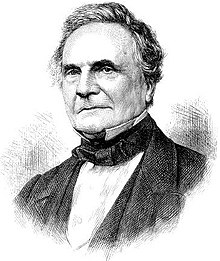
Not all who summon dark spirits succeed, particularly those skeptics who do so merely out of curiosity. Such is the case of Charles Babbage, the 19th century English polymath who is credited with being the “father of the computer” for his invention of the difference engine, a mechanical calculator. When he was a boy, Babbage applied his inquisitive mind toward attempts to empirically prove the existence of God. Assuming that if he could call Satan up from the infernal realms, he would be able to interview him about God, Babbage pieced together what information he could for the invocation.
Babbage’s ritual basically entailed cutting his finger to draw a circle on the floor in his own blood, inside which he sat and recited the “Lord’s Prayer” in reverse. He waited for the presence of either the Devil himself, or one of his familiars, which Babbage expected to either be an owl, a black cat, a rabbit or a raven. Unfortunately, Satan declined the invitation. Babbage chalked up his failure to his own lack of faith in the Devil, and what he called his “weakened frame” at the time. Nevertheless, Babbage would continue to seek out empirical evidence of the paranormal throughout his life, including forming a “Ghost Club” while at Cambridge.
Ricky Kasso, The “Acid King”

So much of the Satanic Panic of the 1980s and early 90s was complete and utter bullshit. Whether it was the belief that Dungeons & Dragons and heavy metal were turning kids into Devil worshippers, or that suburban neighborhoods throughout the country were concealing secret Satanic cults who were ritually abusing the nation’s children on a regular basis, it was all total nonsense. Yet, there always has to be the exception to the rule that the utterly insane and conspiratorial will point at in order to justify their beliefs, and for the Satanic Panic Ricky Kasso was that exception. He was a heavy-metal loving, devil-worshipping psychopath who ended up killing one of his friends in what he claimed was a sacrifice to Satan. If he didn’t exist in real life, the Satanic Panic would have had to create him, he was, in many ways the perfect archetype for the time: a youth wasted on drugs, heavy metal and Satan, eventually slipping into madness and murder. He is also exactly the kind of person that practicing Satanists will trip over themselves to exclaim out that he wasn’t ‘a real Satanist’ because of the heinous crimes he committed. Growing up in Northport, New York, Kasso got into drugs and Satanism in high school, eventually forming a group called the “Knights of the Black Circle.” The group allegedly had approximately 20 members who would get together to sacrifice animals, rob graves and worship Satan. They are alleged to have held a Walpurgis Night ritual at the infamous Amityville Horror house. Then on the night of June 16, 1984, Kasso and three friends – Gary Lauwer, Jimmy Troiano and Albert Quinones – went into the woods to take LSD. At some point, Kasso and Lauwer fought, and, according to conflicting accounts offered at Troiano’s trial, Kasso either acting alone, or with the aid of Quinones and Troiano, held Lauwer down while repeatedly stabbed him and chanting “say you love Satan.” Instead, Lauwer is reported to have said “I love my mother,” which only exacerbated Kasso’s rage. In the end Lauwer had his eyes gouged out and was stabbed somewhere between 17 and 32 times. Once the murder was complete Kasso claims that Satan appeared in the form of a black crow to convey his acceptance of the sacrifice. Surprisingly, even in the midst of the Satanic Panic, the police completely downplayed the Satanic angle and instead chalked up the murder to a drug-related crime, pointing to evidence that Lauwer had stolen 10 bags of PCP from Kasso as motive for the murder, as well as the fact that all involved were tripping balls on acid. In the end, we may never know the truth behind what happened in the woods outside of Northport that night. Kasso hung himself after only two days in police custody, while Quinones made a deal for immunity in exchange for testimony against Troiana, who was eventually acquitted at trial when Quinones changed his story and claimed to be unable to remember everything that happened in the woods that night. To this day, neither surviving man will say exactly what took place during the events of what has become the only legitimate piece of Satanic Panic history.




